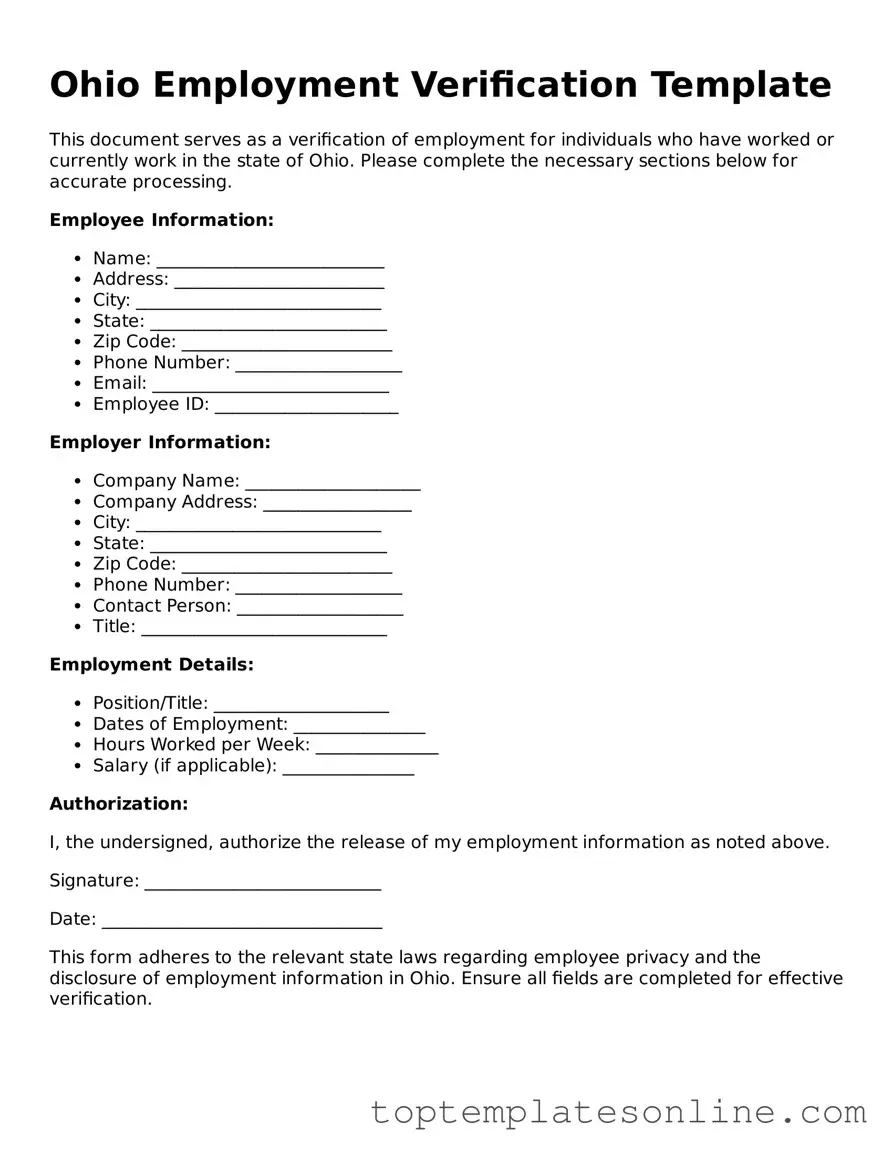When navigating the employment landscape in Ohio, understanding the Employment Verification form is essential for both employers and employees. This form serves as a crucial tool for confirming an individual's employment status, including details such as job title, duration of employment, and salary information. Employers often use it during the hiring process or when verifying a current employee’s credentials for loans, housing applications, or other purposes. For employees, this form can be a vital document when seeking new opportunities or fulfilling various personal needs. Completing the form accurately is important, as it not only reflects the employee's work history but also ensures compliance with any legal requirements. Additionally, understanding who needs to fill out the form and how it should be submitted can streamline the verification process, making it easier for everyone involved. Overall, the Ohio Employment Verification form plays a significant role in fostering transparency and trust in the employer-employee relationship.
